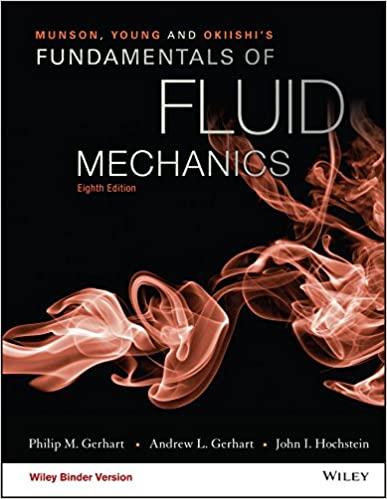A student drops two spherical balls of different diameters and different densities. She has a stroboscopic photograph
Question:
A student drops two spherical balls of different diameters and different densities. She has a stroboscopic photograph showing the positions of each ball as a function of time. However, she wants to express the velocity of each as a function of time in dimensionless form. Develop the dimensionless group. The equation of motion for each ball is
\[ m g-\frac{\mathrm{C}_{\mathbf{D}}}{2} ho A V^{2}=m \frac{d V}{d t} \]
where \(m\) is ball mass, \(g\) is acceleration of gravity, \(\mathrm{C}_{\mathrm{D}}\) is a dimensionless and constant drag coefficient, \(ho\) is air mass density, \(A\) is ball cross-sectional area \(\left(=\pi \mathrm{D}^{2} / 4\right)\) with \(D\) ball diameter, \(V\) is ball velocity, and \(t\) is time.
Step by Step Answer:

Munson Young And Okiishi's Fundamentals Of Fluid Mechanics
ISBN: 9781119080701
8th Edition
Authors: Philip M. Gerhart, Andrew L. Gerhart, John I. Hochstein





